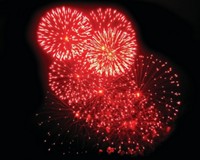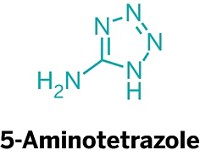Advertisement
Grab your lab coat. Let's get started
Welcome!
Welcome!
Create an account below to get 6 C&EN articles per month, receive newsletters and more - all free.
It seems this is your first time logging in online. Please enter the following information to continue.
As an ACS member you automatically get access to this site. All we need is few more details to create your reading experience.
Not you? Sign in with a different account.
Not you? Sign in with a different account.
ERROR 1
ERROR 1
ERROR 2
ERROR 2
ERROR 2
ERROR 2
ERROR 2
Password and Confirm password must match.
If you have an ACS member number, please enter it here so we can link this account to your membership. (optional)
ERROR 2
ACS values your privacy. By submitting your information, you are gaining access to C&EN and subscribing to our weekly newsletter. We use the information you provide to make your reading experience better, and we will never sell your data to third party members.
Pollution
What’s that Stuff
What’s in fireworks, and what produces those colorful explosions?
Fireworks have thrilled crowds for centuries; now science is working to make their fallout more environmentally friendly
by Elizabeth K. Wilson
June 27, 2017
| A version of this story appeared in
Volume 95, Issue 27
More than 1,000 years ago, most likely in China, someone made the serendipitous discovery that a mixture of sulfur, charcoal, and potassium nitrate burns with startling speed and flash. The mixture, which eventually came to be known as gunpowder, was a Chinese mainstay for centuries, used in cultural ceremonies to scare off evil spirits and in military rockets to deter mortal enemies.
Gunpowder eventually made its way to Europe during the early 1200s. During the Middle Ages, gunpowder-based creations—the precursor to modern fireworks—were limited to booms and a few sparkles. The orangey hues of these early fireworks were produced largely by the glow of very hot solid particles, a phenomenon known as black- or gray-body radiation. Any minor deviation from the campfire orange color—say, to yellow or white—came courtesy of iron, copper, or zinc filings added to the gunpowder mixture.
During the 1800s, chemists began to burn recently synthesized compounds to produce red, green, blue, and purple explosions. The new, striking array of colors came from the spectral emissions of excited gas-phase molecules instead of from black-body radiation.
Many of these quaint color-burning formulas are beloved by old-school pyrotechnicians. But the mixtures of mercurous chloride, arsenic sulfide, copper acetoarsenite, and barium chlorate are unstable, and they are toxic to human health and the environment.
Artisans’ inventions in the past century have brought about fireworks that are not only more colorful but also safer and less prone to spontaneous explosion. In the past six to seven years, research scientists have also made much progress to devise more environmentally friendly fireworks.
The colors of most modern fireworks involve a few metal chlorides, which fluoresce strongly in the visible wavelengths: Barium chloride produces green; strontium chloride produces red; and copper chloride produces blue. These compounds by themselves are so hygroscopic (that is, attractive to water) that they render any mixture damp, unburnable, and even unstable. The solution has been to keep the metal and chlorine separated until showtime. These components get married in a vapor during the burning process, where the energy can also excite the molecules’ electrons, producing the colorful emissions.
A typical firework mixture consists of fuel, an oxidizer to provide the oxygen necessary for burning, and the color-producing metal- and chlorine-donating compounds. The entire mixture is wetted down to bind it together and then cut into flammable chunks known as stars—the colorful dots of light that burst from a firework shell into the sky.
Old books on pyrotechnics are chock-full of recipes for stars, formulas that enthusiasts have been continually refining. In fact, says John A. Conkling, former technical and executive director of the American Pyrotechnics Association and emeritus chemistry professor at Washington College in Chestertown, Md., most developments in fireworks formulas stemmed from experiments by amateurs.
People use to make stars with potassium chlorate, KClO3, which serves as both an oxidizer and a chlorine donor. But KClO3’s unfortunate propensity for forming friction-sensitive compounds when it comes in contact with sulfur, metal powders, ammonium salts, or moisture caused more than a few deadly explosions.
Nowadays, most star formulas use the more stable potassium perchlorate (KClO4). The metal-donating compounds often include barium nitrate, strontium carbonate or nitrate, sodium oxalate, and copper carbonate.
In the past few decades, colors have also gotten markedly more vivid—almost fluorescent and electric—thanks to the addition of the magnesium-aluminum alloy magnalium. Even blue, the most difficult color to produce, has evolved from an anemic bluish white to an honest-to-goodness azure. “People may think colors look brighter; well, they’re correct,” Conkling says.
More seriously, lovers of fireworks have also had to grapple with the reality that the detritus, smoke, and chemical vapors that rain down during a fireworks show pollute the environment. The U.S. Environmental Protection Agency now regulates perchlorate levels in water and soil. Metals in fireworks such as strontium and barium are toxic to human and animal health, and the burning process produces other harmful species such as polychlorinated hydrocarbons.
Pyrotechnic scientists have already begun to address some of these issues, says David Chavez, an explosives chemist at Los Alamos National Laboratory. Traditional firework shell casings, which are made out of cardboard, fall back to the ground. New casings, made from polymers such as hydroxyl-terminated polybutadiene, burn entirely.
Scientists are also developing new ways to produce brightly colored but environmentally friendly flames. A group led by Jesse Sabatini, an energetic-materials chemist at the U.S. Army Research Laboratory, has developed a green-burning compound that uses tris(2,2,2-trinitroethyl)borate instead of barium. The color’s spectral purity far surpasses that produced by barium formulas, Sabatini says.
Over in Germany, a group led by Thomas M. Klapötke at Ludwig Maximilian University Munich enhanced the vividness of blue fireworks while improving their environmental profile. Copper bromide, the researchers discovered, emits a brilliant blue without the use of chlorine compounds. Their flame formula includes copper bromate [Cu(BrO3)2] as an oxidizer and hexamine as a fuel.
These new color developments may take some time to enter mainstream commercial fireworks displays, but Sabatini says companies anticipating new regulations are cautiously receptive to the idea of using the new formulations, even if they cost more.
Ironically, red flames, which were once the easiest to produce with toxic strontium compounds, are now the hardest to produce with environmentally friendly components. Scientists have been able to create red formulas without perchlorates, but they haven’t found a good replacement for strontium. Lithium, Sabatini says, is one possibility, but it also burns incandescently, emitting light of all frequencies, which washes out the red. It’s going to take a lot of effort to finally develop a strontium-free red, Sabatini, says. When researchers do, there will certainly be cause for celebration—and perhaps a few crimson-colored fireworks.
Advertisement
Editor’s note: Elizabeth Wilson, who recently retired from C&EN’s West Coast bureau, is a pyrotechnician licensed in California.





Join the conversation
Contact the reporter
Submit a Letter to the Editor for publication
Engage with us on Twitter